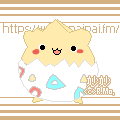鼎
Ding (Vessel)
古代用于烹煮食物的器物,也是重要的礼器。相传夏禹铸九鼎,象征九州,成为夏、商、周三代传国的重要器物,被视作王位合法性、权威性的物证。鼎多以青铜铸成,一般两耳三足或四足。三足喻“三公”(古代中央掌管全国行政、司法、军事最高权力的三个官职),四足喻“四辅”(古代天子身边的四个辅佐)。秦代以后,鼎作为实物逐渐失去王权象征意义,但“鼎”字仍被用于指王位、帝业或国家政权;也被赋予“显赫”“盛大”“尊贵”等义。
Ding was a vessel to cook food and was also used as an important ritual object in ancient times. Legend has it that Emperor Yu of the Xia Dynasty had nine dings cast, symbolizing the nine regions in the country. Ding was regarded as embodying the legitimacy and authority of the throne during the three dynasties of Xia, Shang, and Zhou. Ding was mostly cast in bronze, usually with two ears and three or four legs. The three legs stood for the “three chief ministers” (the three most powerful official positions in ancient times in charge of national civil administration, the judiciary, and military affairs). The four legs stood for the four advisors to the emperor. After the Qin Dynasty, ding gradually lost its function as a symbol of royal authority, but the word ding was still used to refer to the royal throne, the monarchy, or state power. It was also given the meaning of “glory,” “grandeur,” and “dignity.”
引例 CITATIONS
鼎者,宗庙之宝器也。 (《汉书·五行志中之上》) (鼎是宗庙中象征王位的祭器。)
The ding was a vessel symbolizing the highest authority in an ancestral temple. (The History of the Han Dynasty)
论逆臣则呼为问鼎。 (刘知几《史通·叙事》) (论及逆臣,就称之为“问鼎”。)
A minister who wanted to seize the throne was referred to as one who inquired about the ding. (Liu Zhiji: All About Historiography)
免责声明:以上内容来自互联网,版权归原作者所有,如有侵权请告知,本站将及时删除相关内容。
Ding (Vessel)
古代用于烹煮食物的器物,也是重要的礼器。相传夏禹铸九鼎,象征九州,成为夏、商、周三代传国的重要器物,被视作王位合法性、权威性的物证。鼎多以青铜铸成,一般两耳三足或四足。三足喻“三公”(古代中央掌管全国行政、司法、军事最高权力的三个官职),四足喻“四辅”(古代天子身边的四个辅佐)。秦代以后,鼎作为实物逐渐失去王权象征意义,但“鼎”字仍被用于指王位、帝业或国家政权;也被赋予“显赫”“盛大”“尊贵”等义。
Ding was a vessel to cook food and was also used as an important ritual object in ancient times. Legend has it that Emperor Yu of the Xia Dynasty had nine dings cast, symbolizing the nine regions in the country. Ding was regarded as embodying the legitimacy and authority of the throne during the three dynasties of Xia, Shang, and Zhou. Ding was mostly cast in bronze, usually with two ears and three or four legs. The three legs stood for the “three chief ministers” (the three most powerful official positions in ancient times in charge of national civil administration, the judiciary, and military affairs). The four legs stood for the four advisors to the emperor. After the Qin Dynasty, ding gradually lost its function as a symbol of royal authority, but the word ding was still used to refer to the royal throne, the monarchy, or state power. It was also given the meaning of “glory,” “grandeur,” and “dignity.”
引例 CITATIONS
鼎者,宗庙之宝器也。 (《汉书·五行志中之上》) (鼎是宗庙中象征王位的祭器。)
The ding was a vessel symbolizing the highest authority in an ancestral temple. (The History of the Han Dynasty)
论逆臣则呼为问鼎。 (刘知几《史通·叙事》) (论及逆臣,就称之为“问鼎”。)
A minister who wanted to seize the throne was referred to as one who inquired about the ding. (Liu Zhiji: All About Historiography)
免责声明:以上内容来自互联网,版权归原作者所有,如有侵权请告知,本站将及时删除相关内容。
